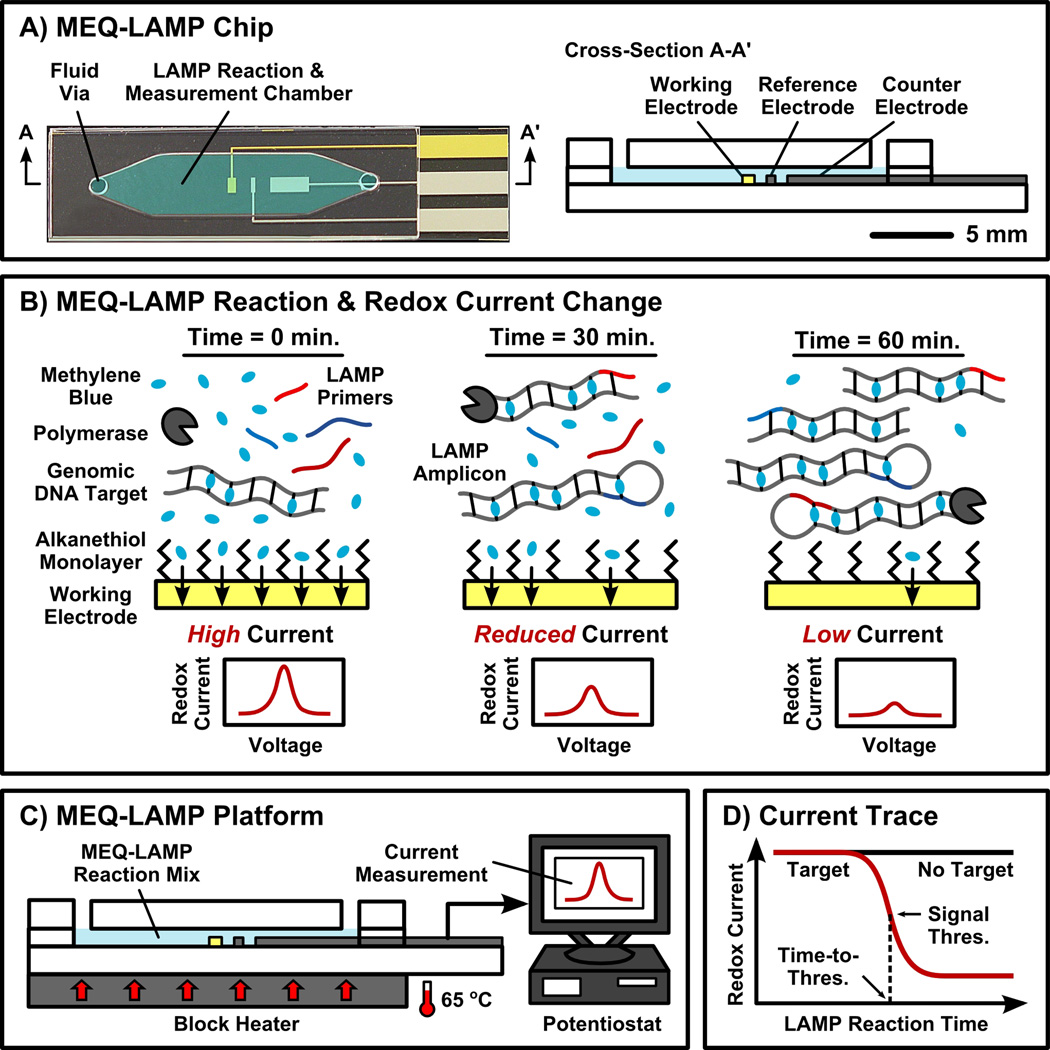Figure 1. Overview of MEQ-LAMP.
(A) The MEQ-LAMP reaction is performed within a single-chamber microfluidic chip, which functions as both the LAMP reaction well and the electrochemical measurement cell. (B) The MEQ-LAMP reaction solution contains an electrochemically-active DNA-binding compound methylene blue (MB). Prior to amplificaiton, MB is free in solution and thus generates a redox current via its rapid diffusion to the surface of the gold working electrode (left). As the LAMP reaction progresses, MB intercalates into the newly formed, double-stranded product (middle), decreasing the observed redox current (right). (C) In the complete MEQ-LAMP system, the microfluidic chip is connected to a potentiostat for current measurement as well as a block heater to maintain optimal LAMP conditions. (D) Real-time redox current measurements produce a current trace as a function of the reaction time. The initial amount of target DNA can be quantitatively determined by measuring the time required to reach the signal threshold, the point at which amplification occurs with peak efficiency, in a manner analogous to optical real-time PCR methods.

